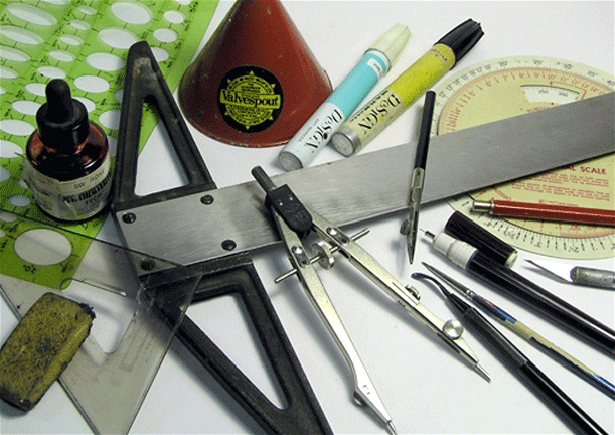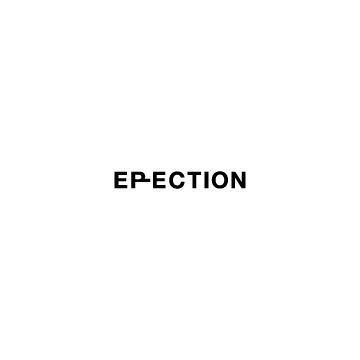Who’s shaping design?
“We shape our tools, and thereafter our tools shape us.”
— John M. Culkin*
But for the last two generations of designers this has not been the case; they have not been permitted to shape their own tools. Companies like Adobe, Figma, MacroMedia, Sketch, Microsoft, Apple, and more recently Lovable, Framer, and others, have shaped designers tools for them, indeed they have shaped the designers themselves with close partnerships with education programs and universities. More to the point, these companies, not designers themselves, have determined how design should be done, defining both the how and the what can be designed within the boundaries of their software’s sandbox; its functionality.
Whether its in vectors, pixels, or code, these tools determine layouts, colors, typography, etc., based on their capabilities. Their promise of efficiency freeing designers to focus on the big picture, on strategy and getting what they have long desired; a seat at the table. Long gone are the days when designers learned how to use a ruler and compass, rapidograph pens, x-acto knifes, or even how to sketch with paper and pen. While I have always embraced change, with those things replaced by software, designers no longer gain the critical skills learned by knowing how their design was made.
Grid systems, which included typographic scales, were once seen not as a stylistic choice but a method to bring order, consistency, and hierarchy to visual communication. Most importantly grids framed design as a system, not a series of screens or pages, Based on the content being communicated, the corresponding grid was a reduction to essentials—meant to create a limited set of options, and remove arbitrary decisions and ensure harmony across complex systems. They were reserved, minimalistic in nature, making it hard to not have predictable alignment patterns within the content. The grid also took into account the font being used, its line lengths and character proportions, to ensure that the text flowed pleasingly, not creating rivers or widows. Today’s “grids” have devolved into a meaningless mesh of dozens or even hundreds columns, there is no thought given to typographic scales, and no consideration to the system of communication; that will all taken care of by the software, right?
Design’s ultimate “grid” was the definition of design languages (see my previous article on design languages vs. design systems.) but with push toward efficiency, no longer are brands investing in the definition of their own design language, but have instead opted to adopt of 3-4 design systems from companies like Google, Microsoft, etc.—who also happen to own the platforms on which most of these applications will run…
Software has all but eliminated the need for designers learn craft. Designers can be confident that a square is in fact square, that is has four right corners, and sides of equal length, or that a circle is perfectively found. But in exchange, these tools have eliminated the learnings that come with exploring ratios, geometry, and proportion. The appreciation of an individual letter’s form that comes with recreating it from scratch.
When I was in school on the students in my expressive typography class—a class where we first had to hand draw letter forms in different weights to under the proportions and construction of the letters, create a wonderfully simple piece of expressive typography:
I have yet to see a designer who’s only experience with typography is on a computer have this level of craft in regard to understanding letterform.
With the software’s ability to travel back in time with the pervasive undo button, resources no longer need to be conserved and the risk/reward of a decision, no longer needs to be considered in advance. Indeed, the ability to collapse entire timelines by enabling one to concurrently ideate while also producing the final artifacts removes the time that once afforded ideation, iteration, reflection and refinement.
Designers have become the client,
and the software is now the designer.
In place of this knowledge, today’s designers have proficiency with software—which at best is a level of abstraction removed from the design and its constituent elements. Fingers no longer hold tools, they input on a keyboard, or more and more, the designer simply talks to their computer describing what they are after. Watching these interactions evolve it is clear that the designers have become the client, and the software is now the designer. And given the software is likely based on an LLM of images, it completely lacks any understanding of the underlying structure that went into producing the designs.
Craft is about manipulating the details but today all details are now determined by engineers—or more to the point a series of algorithms created by multiple engineers. Details like letter-spacing—kerning, are left to the programmers to determine based on an set of letterform asset or algorithms rather than a well trained eye. Being able to playfully change the spacing to evoke emotions. The idea of manually readjusting how much space resides between the individual letters is no longer considered important except perhaps in the case of a headline or logo. Indeed, exploring and understanding the differences between typefaces and impact that a font has on the expression, the emotional conveyance, of a design is limited to choosing between the default fonts in your software.
This acceleration comes at a cost; this model of working removes the tangible byproducts reflecting the designer’s evolution in thinking; their sketches. Like a mathematician’s chalkboard filled equations, a designer’s sketches walked the problem, its iterations, and refinements, until reaching the solution, which was then produced in final form for production. Not only did this process sharpen the designer’s craft, immersing the designer in their thinking, but it also forced the designer to see the small details and nuances of their design. Enabling them to identify and define success for their designs. Sketches, doodles and tracings not only help the designer to think, and to collaborate, these tangible artifacts can persist in the world as points of reference, compounding the designer’s skills and deepening their understanding of form, composition, color, typography, etc., in short making them better designers.
In response both design education and the practice of design, have been shaped by these tools. Designers who graduated after 2000 likely never learned, let alone really understand, the underlying craft of the their profession. Which is why so many designs look derivative, with their creators mimicking trends rather than pursuing anything original let alone good design. (Every genAI logo has its required sparkles, set against a pink-orange, blue-purple gradient.)
Ironically GenAi could provide an answer
Today designers are focused on learning how to enter structured prompts to generate and curate designs. For these individuals the closest they come to designing is in how they write the requirements (structured prompts). They assume the role of critic/curator in their review of the generated designs, commenting on what is generated and requesting refinements. If that is all they are willing to do, then they have doomed design to eat its own tail.
However there is another path available.
With AI design has the ability to return to its roots, to once again take on the role of creator, and be the creator of their tools.
Designers could follow the long tradition of making the tools they need to realize their designs. Charles and Ray Eames built the Kazam Machine and turned their apartment into a fabrication shop. The Kazam allowed them to shape, mould and bend plywood to create the shells for their iconic furniture.
With the AI development tools, designers could if they wanted, create their own design tools, tools specifically created to achieve the designs they want to make—like the Eames’.
Allowing people to create new ways of working, new tools, indeed to redefine the very nature of their work is a common theme amongst AI enthusiasts, myself included. This means that for the first time in decades designers are now able to shape their own tools, assuming they understand the potential for such a transformation. Regardless of whether the majority of designers will put in the effort, both in regard to the required self-reflection and the time to develop and refine their personalized tools. I feel it would be better for the designers to create their tools than for them to leave it up to the platform players who will undoubtedly continue in their efforts to automate and accelerate while ignoring the foundation of craft in design.
There is no question that a new wave of design tools will emerge, each promising a better tomorrow. And like their predecessors will be doomed to consolidation in a market dominated by those handfull of companies who believes one size fits all, with templates, refined capabilities and embedded workflows.
However, designers who are able to create a new sets of tools, ones that embrace craft as well as execution, that balance the human centric practices with scalability, curiosity and novelty with metrics and outcomes, will find themselves at the forefront of what’s to come. As designers we should not settle for some else’s definition of the tools we need, or worse someone else’s definition of “craft” when those people are not designers themselves.
We need to define those things.
We need to own those things.
We need to return to shaping our tools.
*Many mistakenly credit Marshall McLuhan for this quote, as it perfectly aligns with his work on how technology are extensions of ourselves, and how the technology we create returns the favor by redefining our norms and morals.



